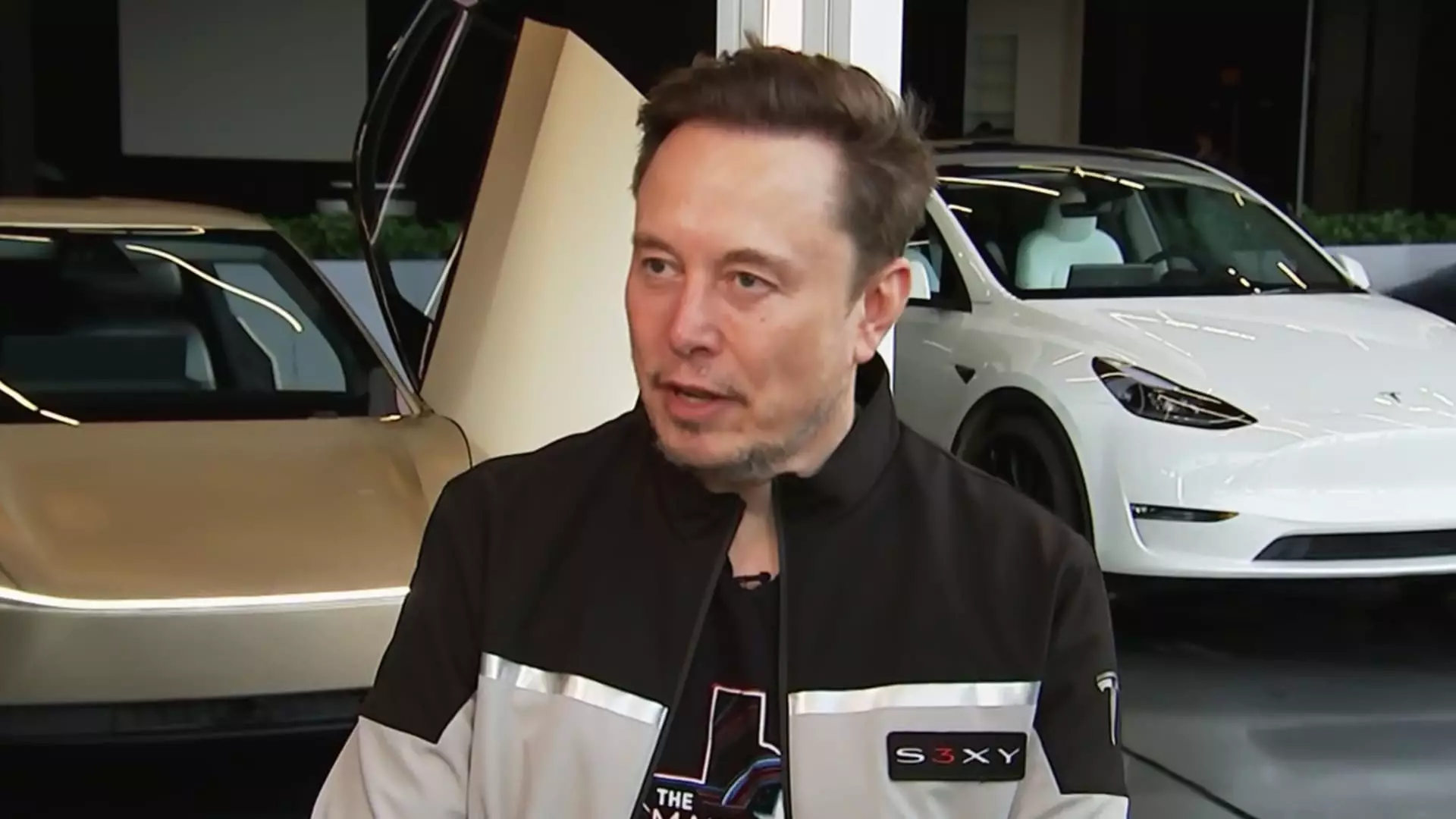In a groundbreaking announcement that has captured the attention of tech enthusiasts and investors alike, Tesla CEO Elon Musk confirmed plans for a fleet of robotaxis set to hit the streets of Austin, Texas. This declaration marks a pivotal moment in the realm of autonomous transportation, showcasing Musk’s unwavering ambition to revolutionize the way we think about mobility. The initial rollout will feature a modest fleet of approximately 10 Tesla Model Y vehicles, a calculated approach that underscores Musk’s philosophy of prioritizing safety and reliability before a full-scale launch.
Musk’s vision is grand; he envisions a world where autonomous vehicles are not merely a novelty but an integral part of everyday life. With aspirations to expand operations into other major U.S. cities like Los Angeles and San Francisco following the Austin debut, Tesla aims to demonstrate the viability of their autonomous technology. This ambitious itinerary has ignited a fervor in the electric vehicle market, as well as amongst potential customers and stakeholders who may see a transformative shift in urban transport.
The Technology Behind the Vision
Unlike competitors such as Alphabet’s Waymo, which employs an arsenal of high-end sensors including lidar, Tesla’s strategy pivots on a more cost-effective model centered around camera-based systems and artificial intelligence. Musk has long espoused the benefits of utilizing digital neural networks to navigate the complexities of real-world driving. In his view, relying on fewer, but smarter, sensors will facilitate production scaling and allow for a robust fleet capable of adapting to various terrains and driving conditions.
Musk unveiled that the upcoming fleet of robotaxis will be outfitted with an advanced version of the Full Self-Driving (FSD) software, dubbed FSD Unsupervised. However, the initial phase will see the vehicle operations geofenced—restricted to specific areas in Austin to mitigate risk during this pioneering endeavor. This strategy of careful curation in early stages reflects a significant learning curve, embodying a sense of cautious optimism rather than reckless ambition.
Addressing Safety Concerns
While the potential for driverless transportation excites many, concerns regarding safety and regulatory acceptance loom large. Musk acknowledged these anxieties during his interview with CNBC’s David Faber, emphasizing the importance of remote monitoring by Tesla employees during the initial rollout. “We’ll be watching what the cars are doing very carefully,” he stated, signaling Tesla’s commitment to cautious expansion. This proactive oversight aims to foster public trust and ensure operational integrity before scaling up the fleet dramatically.
The approach of starting small—testing, analyzing, and iterating—serves not only to refine their technology but also acts as a defensive measure against potential backlash from the public and governmental bodies. As Musk himself has noted, “It’s prudent for us to start with a small number, confirm that things are going well and then scale it up.”
Market Dynamics and Political Climate
However, beyond the technical aspirations lies a turbulent market landscape. Recent earnings reports highlighted a 20% decline in automotive revenue for Tesla, which Musk attributes to necessary retooling at factories to usher in updates for the popular Model Y. This setback raises questions about strained consumer sentiment and the importance of brand perception—specifically, public attitudes related to Musk’s political associations and their effect on sales.
In an era where consumers are increasingly scrutinizing the ethical implications of their purchases, Musk’s political involvement serves as a double-edged sword. While his leadership and innovation have drawn considerable loyalty, controversies surrounding his outspoken nature and political affiliations could deter some consumers. Musk provocatively questioned how much consumers truly care about a CEO’s political views when making purchasing decisions. His assertion suggests a belief that technological prowess and product quality will ultimately outweigh any political fallout.
The Journey Ahead
Tesla stands at a crossroads. As it embarks on the journey toward fully autonomous ride-sharing, the company will undoubtedly face myriad challenges—technological, regulatory, and reputational. Musk’s commitment to leading Tesla for another five years signals his determination to steer the company through this pivotal chapter. With an estimated net worth of $376 billion, Musk’s influence continues to shape not only the automotive industry but also wider societal norms surrounding technology and innovation.
Whether Tesla’s ambitions come to fruition remains to be seen. Still, one thing is certain: the race toward autonomous transport is accelerating, and as it unfolds, it will reshape the very fabric of our cities and communities.

